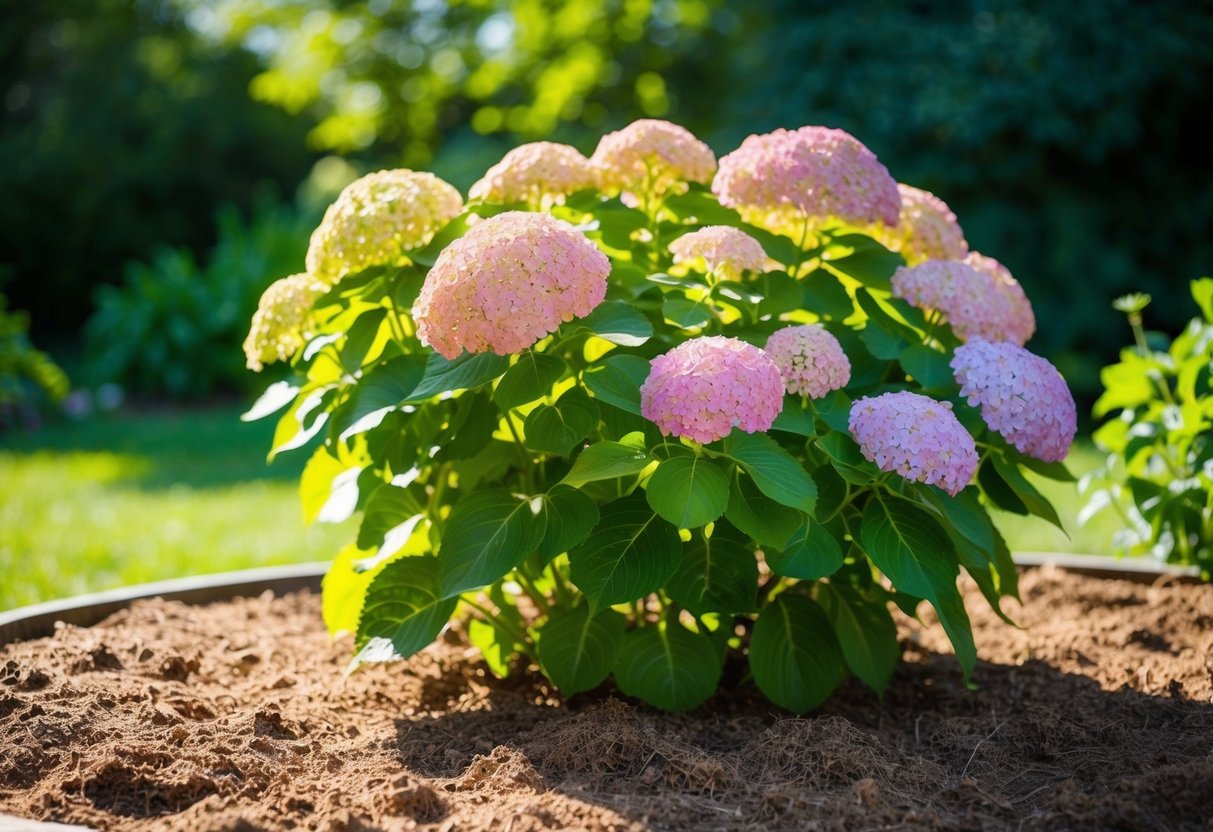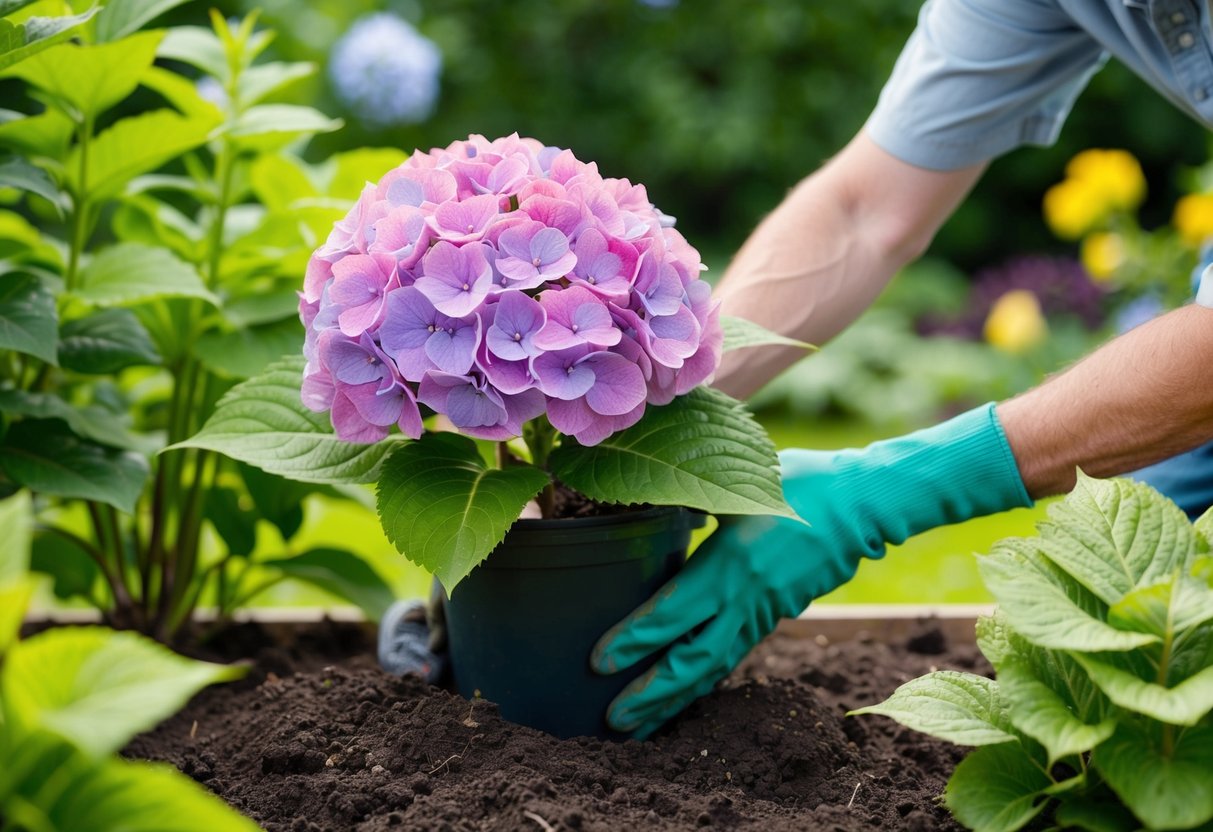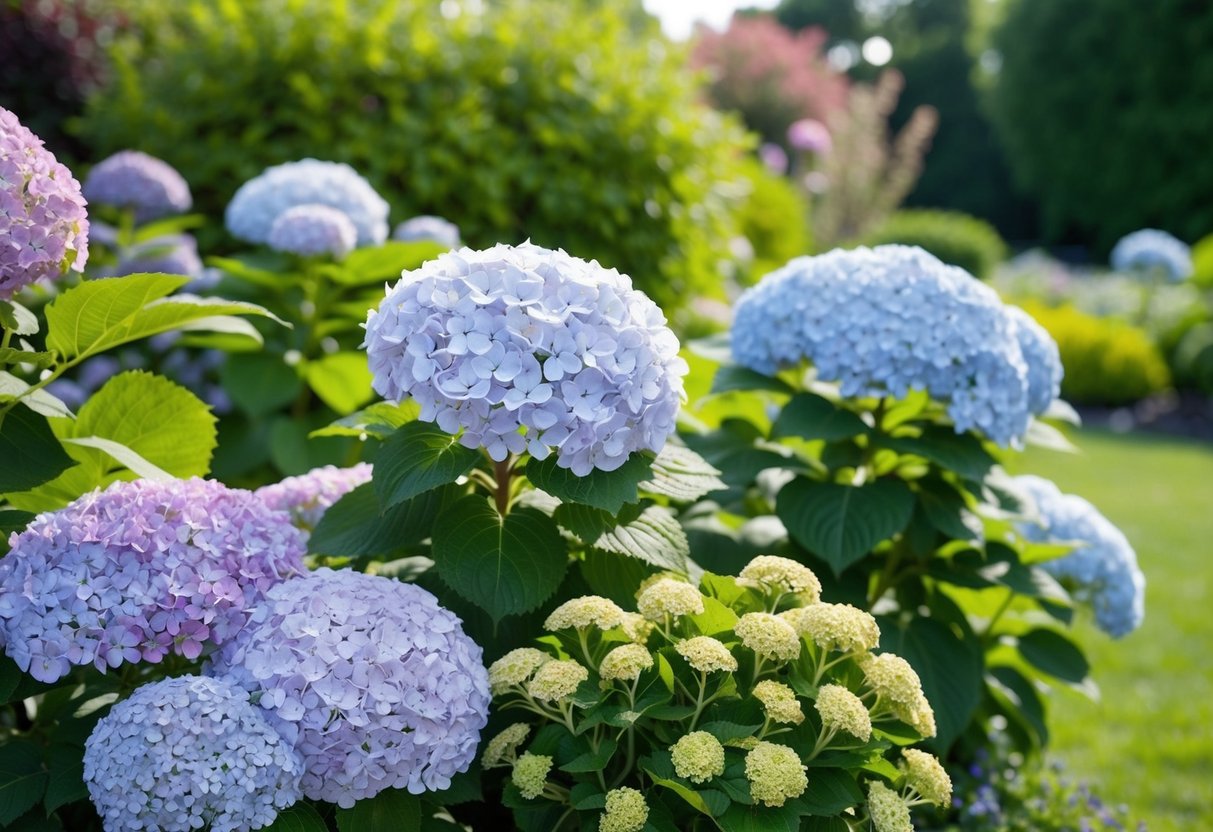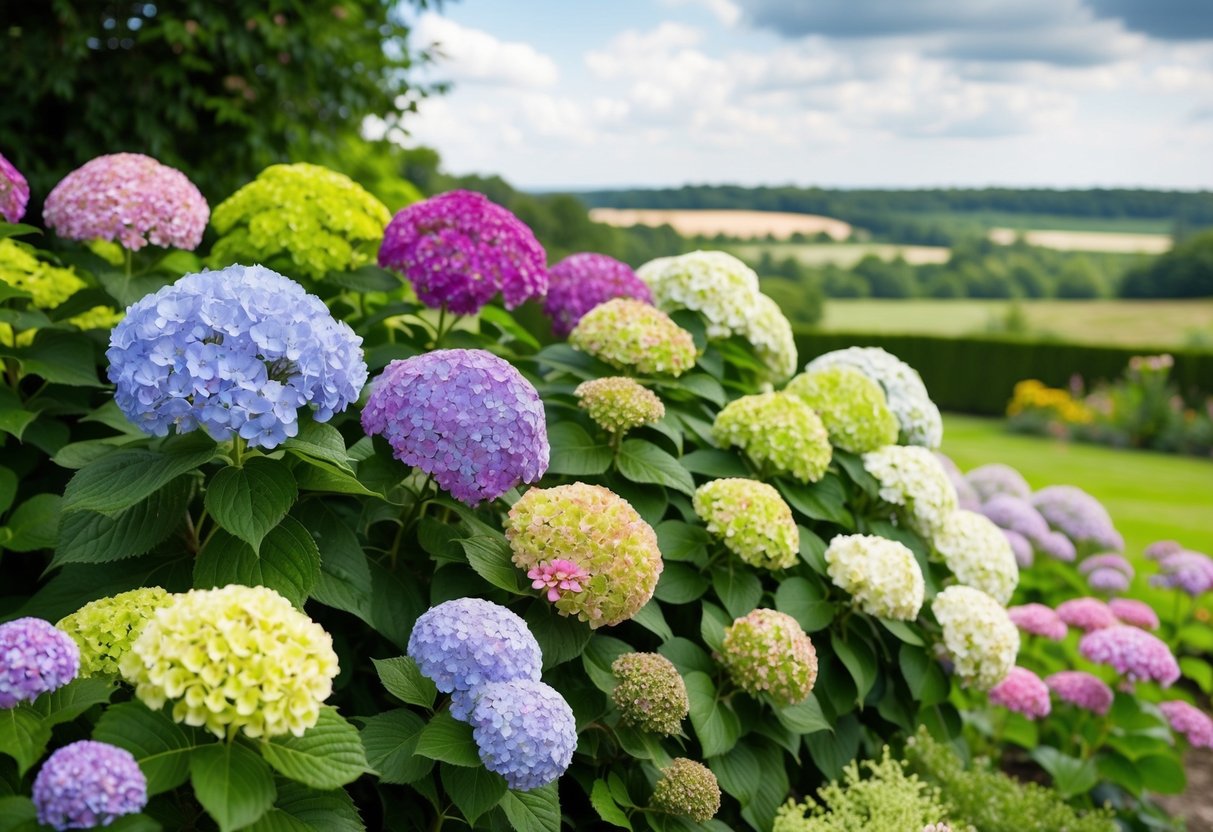What is the Easiest Hydrangea to Grow in the UK? A Guide for Beginners
If you’re looking to add hydrangeas to your UK garden, choosing the right type can make all the difference in ensuring they thrive. Understanding which species are best suited for beginners can take the guesswork out of gardening. Smooth hydrangeas, like ‘Annabelle,’ are considered one of the easiest to grow in the UK due to their forgiving nature and simple care requirements.

One of the appealing aspects of hydrangeas is that they can flourish in various conditions, from full sunlight to partial shade. This makes them a versatile choice for many garden settings. The climbing hydrangea is another excellent option, particularly if you want to add vertical interest to a wall or building in your garden.
For those new to gardening, starting with low-maintenance varieties can be beneficial. Panicle hydrangeas, such as ‘Limelight,’ are also a good choice, offering incredible blooms with minimal upkeep. These options make hydrangea planting an enjoyable experience, even for novice gardeners.<|vq_6736|>
Choosing the Right Varieties for Your Garden

When selecting hydrangeas for your garden, it’s important to consider the unique characteristics of each variety. Factors like preferred sunlight, soil type, and desired bloom shape should guide your choice. Here are a few popular options you might consider planting.
Hydrangea Macrophylla – Mopheads and Lacecaps
Hydrangea macrophylla offers two beautiful variations: mopheads and lacecaps. Mophead hydrangeas are known for their round, globe-like flower clusters, making them a classic choice for gardens. They bloom in colors that can range from blue to pink, depending on the soil’s pH.
Lacecap hydrangeas, on the other hand, feature flat-topped flowers that resemble delicate lace. Both types thrive in partial shade and require well-drained soil. In the UK, they are a popular choice since they can handle cooler climates. For gardeners who want to have fun with colors, consider adding a soil amendment to alter their bloom color.
Hydrangea Paniculata – Panicle Hydrangea
Hydrangea paniculata, commonly known as the panicle hydrangea, can tolerate more sun than other types. This makes it ideal for spots in your garden with direct sunlight. The cone-shaped flower clusters are a stunning display, turning from white to pink as they mature.
Panicle hydrangeas are also known for their hardiness, making them suitable for colder regions. They generally bloom later in the summer, extending the flowering season in your garden. You can easily maintain their shape by pruning them in late winter or early spring.
Hydrangea Arborescens – Annabelle and Smooth Hydrangea
Hydrangea arborescens, including the beloved Annabelle, is a favorite among gardeners for its impressive flower heads. These blooms can reach up to 12 inches across, creating a bold statement in any garden.
Annabelle hydrangeas prefer partial shade and are easy to grow, even in average soils. They’re low-maintenance, needing occasional pruning to maintain vigor. Their adaptability to different soil conditions makes them a great option for beginners in the UK, offering abundant blooms from mid-summer into fall.
Hydrangea Quercifolia – Oakleaf Hydrangea
Hydrangea quercifolia, or the oakleaf hydrangea, is distinct for its textured leaves that resemble oak leaves. This variety provides year-round interest, with vibrant red and orange foliage in the fall.
Oakleaf hydrangeas thrive in partial shade and are adaptable to a range of soil types, provided they have good drainage. Their elongated flower clusters start off white and gradually turn pink or purple. With their unique foliage and long-lasting blooms, these deciduous shrubs add both texture and color, making them a versatile choice for various garden styles.
Understanding Soil and Sun Requirements

To grow hydrangeas in the UK easily, you’ll need to focus on the right soil and sunlight conditions. The right soil pH and nutrient levels can help your hydrangeas thrive, while proper sunlight exposure ensures healthy growth.
Soil pH and Nutrient Levels
Hydrangeas prefer soils that are rich and well-drained. The pH of the soil affects the color of the hydrangea flowers. For blue flowers, aim for acidic soil with a pH of 6.5 or lower. Pink flowers, on the other hand, appear in alkaline soils with a pH higher than 6.5.
It’s essential to add mulch around your hydrangeas. This helps retain moisture while adding nutrients to the soil. Loamy soil, which is a mix of sand, silt, and clay, is ideal for hydrangeas due to its good drainage and moisture retention.
Regularly test soil acidity to keep levels appropriate for the flower colors you desire. If necessary, use soil amendments to adjust the pH to your liking.
Sunlight Exposure and Shade Tolerance
Hydrangeas thrive best with plenty of morning sunlight and some afternoon shade. This balance helps keep the soil cool and keeps moisture levels stable. Too much direct sunlight can lead to wilting, particularly in hot summer months.
You can maximize shade tolerance by planting hydrangeas near structures or trees that provide afternoon shade. Be mindful that too much shade can reduce flowering. Morning sun paired with afternoon shade gives the best results, allowing the plants to flourish without being scorched.
By managing sunlight exposure correctly, you’ll ensure your hydrangeas have strong blooms throughout the growing season.
Planting and Caring for Hydrangeas

To successfully grow hydrangeas, consider the best time for planting, the importance of proper watering and mulching, and how to fertilize to encourage healthy growth. Each step ensures your hydrangeas thrive, whether planted in the ground or containers.
Best Time to Plant
Planting hydrangeas in the UK is ideal during spring or autumn. These seasons provide moderate temperatures and ample rainfall, which help young plants establish roots. When planting, select a location that receives either morning sun and afternoon shade or dappled sunlight throughout the day.
Prepare the soil by digging a hole about twice the width of the root ball. Loosen the roots to ensure better growth. Place the hydrangea at the same depth as it was in the pot and fill the hole with soil. Water generously right after planting to help settle the soil around the roots.
Watering and Mulching
Hydrangeas need consistent watering, especially during the growing season. Aim to give them a deep drink of water once or twice a week, making sure the soil is moist but not saturated. Stick a finger about 4 inches into the soil; if it feels dry, it’s time to water.
Mulch around your hydrangeas with a thick layer of organic material like bark, which helps retain moisture and suppress weeds. Mulching is crucial for controlling soil temperature and maintaining a stable environment for the roots. Make sure the mulch is spread evenly but not piled against the stem.
Fertilizing for Healthy Growth
Fertilizing hydrangeas supports strong growth and vibrant blooms. Opt for a balanced, slow-release fertilizer applied in spring when new growth starts. Adjust the type and amount of fertilizer based on the specific needs of your hydrangea variety and soil quality.
For container-grown plants, liquid fertilizer can be used monthly during the growing season. Be cautious not to over-fertilize, as this can lead to lush foliage but reduced flowering. Regular feeding ensures your hydrangeas remain healthy and capable of producing stunning blooms throughout the season.
Pruning Techniques for Optimal Blooming

Pruning your hydrangeas correctly can make a big difference in their growth and the number of blooms you enjoy. By understanding when and how to prune different types, you ensure healthy, vibrant plants all season long.
When to Prune
Timing is key when it comes to pruning hydrangeas. For those that bloom on new wood, like panicle hydrangeas, prune in late winter or early spring, just before new growth starts. This encourages strong shoot development for more blooms. For hydrangeas blooming on old wood, such as bigleaf varieties, prune immediately after they finish flowering in late summer. Pruning too late may remove next year’s flower buds.
How to Prune Different Hydrangea Types
Different hydrangea types need different approaches. For hydrangeas that grow on new wood, you can remove up to one-third of the plant’s height. If your panicle hydrangea is overgrown, you can do a hard prune almost to the ground. For bigleaf hydrangeas blooming on old wood, focus on minimal pruning to avoid cutting off new flowerheads. Always start by removing dead or crossing stems to improve air circulation and boost health.
Dealing with Overgrown Plants
If your hydrangea has become leggy or overgrown, pruning can rejuvenate it. Start by removing dead wood. For very leggy plants, cut back up to a third of the stems to the ground, encouraging new growth from the base. Tidying up crossing stems and thinning out the plant can also help expose more of the stems to sunlight. Proper pruning keeps your hydrangea healthy and vibrant, ensuring abundant blooms.
Seasonal Care and Maintenance Tips

Caring for hydrangeas in different seasons involves specific practices to ensure healthy growth. You’ll need to protect them in winter, refresh the soil regularly, and keep an eye out for pests and diseases.
Protecting Hydrangeas in Winter
Winter can be harsh on hydrangeas, especially in full sun or partial shade. To keep them from freezing, cover the base with a thick layer of mulch. This helps retain warmth.
If possible, move potted hydrangeas to a greenhouse. It creates a controlled environment that shields them from cold winds and frost. While you should limit watering, occasional moisture is necessary, especially during dry spells. As autumn foliage falls, remove any debris that could lead to rot or disease.*
Refreshing the Soil and Mulch
Refreshing the soil and mulch is essential for your hydrangea’s growth. Each spring, before new growth starts, add a fresh layer of mulch. This keeps moisture in the soil and prevents weeds.
Consider compost or well-rotted manure for improved nutrients. Turn the soil gently to keep it loose and well-drained. If you’re in an area with heavy clay, consider raised beds or containers. This improves drainage, letting roots spread easily. Remember, well-maintained soil fosters vibrant blooms.
Monitoring for Pests and Diseases
Keeping hydrangeas healthy involves regular checks for pests and diseases. Common pests include aphids and spider mites, which may require treatment with insecticidal soap or neem oil. Inspect leaves regularly, especially in partial shade, where damp conditions can foster fungal diseases.
If you spot powdery mildew or leaf spots, trim the affected areas to prevent spread. Keeping plants clean and dry fends off most issues.
In cases of severe infestations, consider professional advice to protect your hydrangeas. Routine observation minimizes problems and keeps your blooms thriving.







